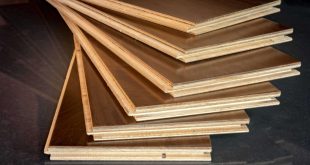Plastic manufacturing is a critical component of countless industries, from packaging and automotive to medical devices and consumer goods. Understanding the various plastic manufacturing processes can help businesses optimize production, reduce costs, and enhance product quality. This comprehensive guide will delve into the key insights for optimizing plastic manufacturing processes, their applications, advantages, disadvantages, and insights for achieving better product outcomes.
1. Overview of Plastic Manufacturing
What is Plastic Manufacturing?
Plastic manufacturing involves transforming raw plastic materials into usable products through various processes. These processes can vary widely depending on the type of plastic being used, the desired product characteristics, and the production scale. Many plastic manufacturing companies in the UAE utilize advanced techniques to ensure efficiency and quality in their production, catering to diverse industries and market needs.
Importance of Plastic Manufacturing
Plastic plays a crucial role in modern society due to its versatility, lightweight nature, and cost-effectiveness. Understanding the manufacturing processes allows companies to innovate and improve their products while addressing sustainability concerns.
2. Common Plastic Manufacturing Processes
2.1 Injection Molding
What is Injection Molding?
Injection molding is a widely used plastic manufacturing process where molten plastic is injected into a mold to create a specific shape. It is particularly suitable for producing complex geometries and high-volume production.
Advantages
- High Efficiency: Capable of producing large quantities in a short time.
- Precision: Produces parts with tight tolerances and intricate details.
- Material Versatility: Suitable for a wide range of thermoplastics and thermosetting plastics.
Disadvantages
- High Initial Costs: Requires expensive molds and machinery.
- Limited Material Types: Not all plastics are suitable for injection molding.
Applications
Common applications include automotive parts, consumer goods, packaging, and medical devices.
2.2 Blow Molding
What is Blow Molding?
Blow molding is a manufacturing process used to create hollow plastic parts by inflating a heated plastic tube (parison) inside a mold. It is ideal for producing containers and bottles.
Advantages
- Cost-Effective for Large Volumes: Economical for producing high quantities of hollow products.
- Fast Production Cycle: Quick cycles lead to increased productivity.
Disadvantages
- Design Limitations: Less versatility in design compared to injection molding.
- Thickness Variability: The wall thickness of the product can be uneven.
Applications
Common applications include plastic bottles, tanks, and other hollow containers.
2.3 Extrusion
What is Extrusion?
Extrusion is a continuous manufacturing process where plastic is melted and forced through a die to create long shapes, such as sheets, pipes, and profiles.
Advantages
- Continuous Production: Suitable for high-volume output.
- Wide Range of Shapes: Capable of producing various profiles and sizes.
Disadvantages
- Limited Complexity: Less suited for intricate designs compared to injection molding.
- Cooling Time: Products may require additional cooling and cutting processes.
Applications
Common applications include pipes, films, sheets, and various structural profiles.
2.4 Rotational Molding
What is Rotational Molding?
Rotational molding involves heating a plastic powder in a mold that rotates on two axes, allowing the material to coat the interior surfaces evenly. This process is commonly used for producing large, hollow items.
Advantages
- Uniform Thickness: Produces parts with consistent wall thickness.
- Cost-Effective for Large Parts: Ideal for large items that are difficult to produce by other methods.
Disadvantages
- Long Cycle Times: The production cycle can be longer than other methods.
- Limited Detail: Not suitable for parts requiring high precision.
Applications
Common applications include tanks, bins, and playground equipment.
2.5 Thermoforming
What is Thermoforming?
Thermoforming involves heating a plastic sheet until pliable, then forming it over a mold to create specific shapes. It is often used for creating packaging and consumer products.
Advantages
- Fast Setup: Quicker and less expensive setup compared to injection molding.
- Variety of Products: Suitable for producing a wide range of products.
Disadvantages
- Material Waste: Trimming excess material can lead to waste.
- Limited Detail: Less capable of achieving fine detail compared to injection molding.
Applications
Common applications include food packaging, trays, and automotive parts.
3. Selecting the Right Manufacturing Process
Factors to Consider
When choosing a plastic manufacturing process, consider the following factors:
- Product Design: The complexity and shape of the product can dictate the appropriate process.
- Material Type: Different processes work better with specific types of plastics.
- Production Volume: High-volume production may favor processes like injection molding or extrusion.
- Cost Considerations: Initial setup costs and per-unit costs must align with budget constraints.
Case Studies: Process Selection
- Case Study 1: A company producing large outdoor containers opted for rotational molding due to the size and uniform wall thickness requirements.
- Case Study 2: A consumer electronics company chose injection molding for precision components requiring tight tolerances.
4. Quality Control in Plastic Manufacturing
Importance of Quality Control
Quality control is crucial in plastic manufacturing to ensure product consistency, performance, and compliance with industry standards. Implementing robust quality control measures can prevent costly defects and recalls.
Key Quality Control Methods
- Visual Inspection: Regular visual checks during production to identify defects early.
- Dimensional Testing: Measuring parts to ensure they meet specified tolerances.
- Material Testing: Assessing material properties, such as tensile strength and impact resistance, to ensure they meet performance criteria.
Quality Assurance Standards
Consider adopting international quality standards, such as ISO 9001, to enhance your quality management system.
Also Read: Open Workspaces: Breaking Down Office Barriers
5. Sustainability in Plastic Manufacturing
The Need for Sustainable Practices
With growing environmental concerns, the plastic manufacturing industry is under pressure to adopt sustainable practices. Implementing eco-friendly solutions can improve brand reputation and meet consumer demand for greener products.
Sustainable Practices to Consider
- Recycling and Reusing: Incorporate recycled materials into production and encourage product take-back programs.
- Biodegradable Materials: Explore biodegradable plastics as an alternative to traditional plastics.
- Energy Efficiency: Optimize production processes to reduce energy consumption and waste.
Certification and Compliance
Ensure compliance with environmental regulations and consider certifications like the Global Recycling Standard (GRS) to validate your sustainability efforts.
6. Innovations in Plastic Manufacturing
Emerging Technologies
The plastic manufacturing landscape is continually evolving with innovations that enhance efficiency and product quality. Key trends include:
- Additive Manufacturing: 3D printing technologies are increasingly used to create prototypes and customized products.
- Smart Manufacturing: The integration of IoT (Internet of Things) technologies for real-time monitoring and predictive maintenance.
- Advanced Materials: Research into advanced polymers, including bio-based plastics and nanocomposites, is leading to new possibilities in product design and performance.
Future Directions
As sustainability becomes a primary focus, innovations in recycling technologies and the development of circular economy models will shape the future of plastic manufacturing.
7. Conclusion
Understanding the various plastic manufacturing processes is essential for optimizing production and achieving high-quality outcomes. By selecting the appropriate process based on product design, material, and production volume, businesses can enhance efficiency, reduce costs, and meet market demands.
Moreover, implementing robust quality control measures and embracing sustainable practices will ensure that your plastic manufacturing operations align with modern consumer expectations and environmental standards. As the industry continues to evolve, staying informed about innovations and emerging technologies will empower businesses to remain competitive and successful in the dynamic world of plastic manufacturing.
Also Read: How Legal Translation Services Work: Processes and Insights
 Daily Blogger News Stay updated with the latest trends and insights. Your reliable source for daily updates and information.
Daily Blogger News Stay updated with the latest trends and insights. Your reliable source for daily updates and information.







